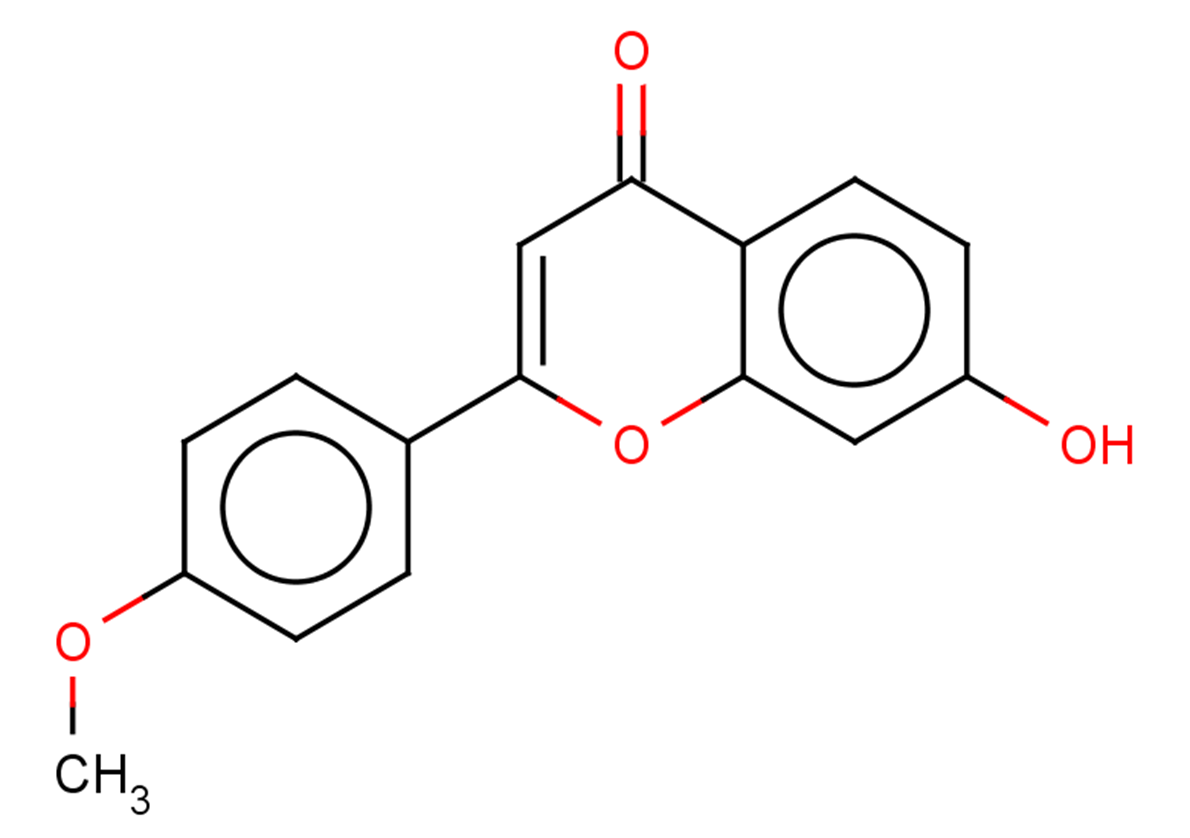
Pratol
CAS No. 487-24-1
Pratol( 7-Hydroxy-4'-methoxyflavone )
Catalog No. M24441 CAS No. 487-24-1
Pratol significantly increased melanin content and tyrosinase activity in the cells without being cytotoxic.
Purity : >98% (HPLC)
 COA
COA
 Datasheet
Datasheet
 HNMR
HNMR
 HPLC
HPLC
 MSDS
MSDS
 Handing Instructions
Handing Instructions
| Size | Price / USD | Stock | Quantity |
| 10MG | 117 | In Stock |


|
| 100MG | Get Quote | In Stock |


|
| 200MG | Get Quote | In Stock |


|
| 500MG | Get Quote | In Stock |


|
| 1G | Get Quote | In Stock |


|
Biological Information
-
Product NamePratol
-
NoteResearch use only, not for human use.
-
Brief DescriptionPratol significantly increased melanin content and tyrosinase activity in the cells without being cytotoxic.
-
DescriptionPratol significantly increased melanin content and tyrosinase activity in the cells without being cytotoxic.
-
In Vitro——
-
In Vivo——
-
Synonyms7-Hydroxy-4'-methoxyflavone
-
PathwayOthers
-
TargetOther Targets
-
RecptorOthers
-
Research Area——
-
Indication——
Chemical Information
-
CAS Number487-24-1
-
Formula Weight268.26
-
Molecular FormulaC16H12O4
-
Purity>98% (HPLC)
-
Solubility——
-
SMILESCOc(cc1)ccc1C(Oc1c2ccc(O)c1)=CC2=O
-
Chemical Name——
Shipping & Storage Information
-
Storage(-20℃)
-
ShippingWith Ice Pack
-
Stability≥ 2 years
Reference
1.Chung Y C , Kim S , Kim J H , et al. Pratol, an O-Methylated Flavone, Induces Melanogenesis in B16F10 Melanoma Cells via p-p38 and p-JNK Upregulation[J]. Molecules, 2017.
molnova catalog



related products
-
TLR1
TLR1 is a cell-penetrating Toll/IL-1 receptor/resistance (TIR) domain/BB-Loop mimic and inhibits IL-1 receptor-mediated responses.
-
Safflower yellow
Safflower yellow is extracted from the flowers of the plant safflower (Carthamus tinctorius).
-
TN1
TN1 is a potent inducer of fetal hemoglobin (HbF).



 Cart
Cart
 sales@molnova.com
sales@molnova.com


